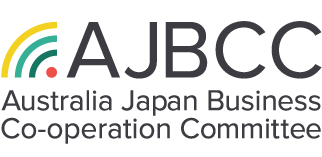27 Sep Why are Japanese companies the way they are?
Japan has the highest number of companies in the world with a history of over 100 years. These companies have been able to maintain their existence through a combination of the peculiarities of their business culture and a core belief in “resilience”. The Japanese proverb “Nana korobi ya oki” which means even if you fall over seven times, you get up eight times – the concept of never giving up.
There are a number of factors which might explain why Japanese companies are the way they are.
One of the most important factors is having a consistent way of thinking and doing business. Many Japanese companies have values that have been passed down through the generations, allowing them to create an enshrined corporate identity. This has been facilitated through the lifetime employment system and the hiring of a CEO from within the company. Consequently, companies in Japan have been reluctant to engage in mergers or acquisitions compared to Australia or the US. Moreover, in the case of Japanese SMEs, the sale or closing of a company is often regarded as shameful.
Another significant factor is belief in creating business strength through core technology and knowledge. Leveraging core technology has enabled many Japanese companies to recreate their business focus, often in response to external market threats. This is accompanied by a drive for continuous innovation.
Examples of core technology being applied innovatively
Fujifilm, Toppan and Nintendo are good examples to review.
Fujifilm
Fujifilm was established in 1934 as a photographic film company. In the 1980s colour films were very popular and Fujifilm was making substantial profits from them. In the midst of their success, Fujifilm released the Fuji digital camera, cutting their profits for colour films. They had the foresight to see the digital age and were proactive in creating a destructive innovation. But due to the introduction of cell phone cameras, digital camera sales began to plummet and rival companies such as Kodak went out of business. Fujifilm in response decided to use its core technologies in order to enter different industries such as the cosmetics and healthcare industry. Fujifilm decided to enter both these industries because they realised that the technology and knowledge they had accumulated through photo film was very similar. Photo film emulsion relied on the use of gelatine, a form of collagen which is a significant ingredient in skin care products.
Nintendo
Nintendo was founded in 1889 as a card game company making the first ever plastic playing cards in Japan. In 1956, the CEO of Nintendo travelled to the United States to take a tour of the world’s largest playing card company and was shocked by how small it was. Nintendo was also under pressure as many companies were entering the card game industry. The CEO concluded that the market for playing cards was too limited and looked to diversify the company’s business based on Nintendo’s core value of creating fun. The company initially entered the mechanical toy market, but realized it could not compete with other companies due to its lack of experience. It subsequently explored the innovative use of electronic gaming which was rapidly developing in the 1970s and 80s.
TOPPAN
TOPPAN was established in 1900 as a printing company and became one of the majors in the industry. Its traditional print business has been impacted by the period of “digitisation” as print needs have declined with customers moving some of their print requirements to electronic formats. Realising that traditional printing was unlikely to be a growing market, it embarked on a strategy to add on business related to generic solutions for the wider printing processes. Currently it has 3 business segments: Information & Communication – which covers the traditional printing area as well as digital marketing; Living & Industry – including flexible packaging printing and decorative sheets for walls and floors; and Electronics – semiconductor related substrates using its core printing technology capability. This is another good example of a Japanese company extending and innovating its core technology.




